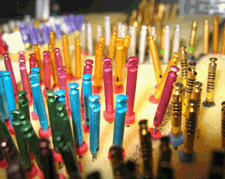المقالات
Crown Needs Root Canal

A crown restores a tooth that has been seriously damaged. While the crown protects the outside of a tooth, it can't protect the soft inner layer called the pulp, which contains the tooth's nerves, veins and arteries.
In some cases, the initial damage repaired by the crown may have spread from the hard exterior of the tooth to the soft inner pulp chamber. In other cases, a crowned tooth can sustain damage that affects the pulp. And occasionally, the pulp of a crowned tooth becomes damaged or infected for reasons we cannot pinpoint. In any case, when the tooth pulp becomes damaged, it becomes vulnerable to infection from bacteria that are normally present in your mouth. If a crown covers a tooth that has an infected pulp chamber, we must remove the infection by performing root canal treatment on the crowned tooth.
Layers of a tooth A file removes infection We understand that some patients have anxiety about root canal treatment, but we want to assure you that it will be comfortable for you. Treatment is, in fact, the most comfortable option, because a tooth with an infection in the pulp chamber will never heal on its own. The unpleasant consequences of infection will worsen and become more painful with time, and may even spread throughout your body.
Because your comfort is important to us, we'll make sure your mouth is thoroughly numb before we begin. Next, we'll place a rubber dam around the infected tooth to isolate it from the rest of your mouth. The rubber dam keeps the tooth dry and accessible for us and prevents anything from falling to the back of your throat.
To get to the infected tooth pulp, we'll make an opening through the top of the crown down into the pulp chamber. In some cases, we may have to remove the entire crown in order to access the pulp chamber. We'll then use a tiny tool called a dental file to carefully remove the infected tissue and shape the root canals to receive a filling material.
At this point, we may take X-rays to be sure that all of the infected pulp is removed. We then fill the root canals with a restorative material. Then we'll fill the hole in your crown with a restorative material or, if we've removed the crown, we'll take steps to create a new crown.
